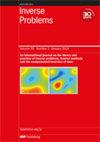L2SR:通过强化学习为加速核磁共振成像学会采样和重建
IF 2
2区 数学
Q1 MATHEMATICS, APPLIED
引用次数: 0
摘要
磁共振成像(MRI)是一种广泛应用的医学成像技术,但其较长的采集时间可能成为临床环境中的一个限制因素。为了解决这个问题,研究人员一直在探索如何在保持重建质量的同时缩短采集时间。以前的工作主要集中在寻找具有固定重建器的稀疏采样器或寻找具有固定采样器的重建器。然而,这些方法并没有充分利用采样器和重建器联合学习的潜力。在本文中,我们提出了一种交替训练框架,通过深度强化学习来联合学习一对好的采样器和重构器。具体而言,我们将核磁共振成像(MRI)采样过程视为由采样器控制的采样轨迹,并引入一个新颖的稀疏报酬部分观测马尔可夫决策过程(POMDP)来制定核磁共振成像采样轨迹。与现有研究中使用的密集回报 POMDP 相比,所提出的稀疏回报 POMDP 计算效率更高,具有可证明的优势。此外,所提出的学习采样和重建(L2SR)框架克服了以往使用密集回报 POMDP 的方法中出现的训练不匹配问题。通过交替更新采样器和重建器,L2SR 学习到了一对采样器和重建器,在 fastMRI 数据集上实现了最先进的重建性能。代码见 https://github.com/yangpuPKU/L2SR-Learning-to-Sample-and-Reconstruct。本文章由计算机程序翻译,如有差异,请以英文原文为准。
L2SR: learning to sample and reconstruct for accelerated MRI via reinforcement learning
Magnetic resonance imaging (MRI) is a widely used medical imaging technique, but its long acquisition time can be a limiting factor in clinical settings. To address this issue, researchers have been exploring ways to reduce the acquisition time while maintaining the reconstruction quality. Previous works have focused on finding either sparse samplers with a fixed reconstructor or finding reconstructors with a fixed sampler. However, these approaches do not fully utilize the potential of joint learning of samplers and reconstructors. In this paper, we propose an alternating training framework for jointly learning a good pair of samplers and reconstructors via deep reinforcement learning. In particular, we consider the process of MRI sampling as a sampling trajectory controlled by a sampler, and introduce a novel sparse-reward partially observed Markov decision process (POMDP) to formulate the MRI sampling trajectory. Compared to the dense-reward POMDP used in existing works, the proposed sparse-reward POMDP is more computationally efficient and has a provable advantage. Moreover, the proposed framework, called learning to sample and reconstruct (L2SR), overcomes the training mismatch problem that arises in previous methods that use dense-reward POMDP. By alternately updating samplers and reconstructors, L2SR learns a pair of samplers and reconstructors that achieve state-of-the-art reconstruction performances on the fastMRI dataset. Codes are available at https://github.com/yangpuPKU/L2SR-Learning-to-Sample-and-Reconstruct.
求助全文
通过发布文献求助,成功后即可免费获取论文全文。
去求助
来源期刊

Inverse Problems
数学-物理:数学物理
CiteScore
4.40
自引率
14.30%
发文量
115
审稿时长
2.3 months
期刊介绍:
An interdisciplinary journal combining mathematical and experimental papers on inverse problems with theoretical, numerical and practical approaches to their solution.
As well as applied mathematicians, physical scientists and engineers, the readership includes those working in geophysics, radar, optics, biology, acoustics, communication theory, signal processing and imaging, among others.
The emphasis is on publishing original contributions to methods of solving mathematical, physical and applied problems. To be publishable in this journal, papers must meet the highest standards of scientific quality, contain significant and original new science and should present substantial advancement in the field. Due to the broad scope of the journal, we require that authors provide sufficient introductory material to appeal to the wide readership and that articles which are not explicitly applied include a discussion of possible applications.
 求助内容:
求助内容: 应助结果提醒方式:
应助结果提醒方式:


